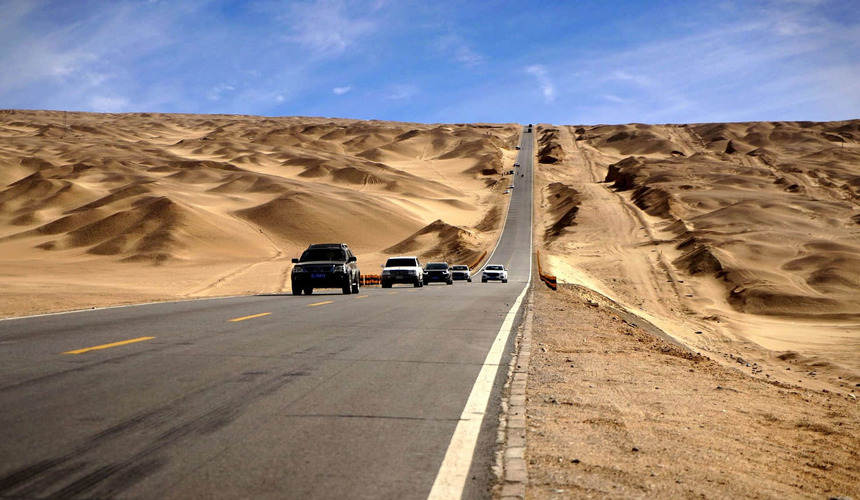
Xinjiang, China – A marvelous summer resort destination
The largest province in China is Xinjiang. It is the homeland of the Muslim Uyghurs. This is the ideal location for exploring the historical sites of the ancient Silk Road. The regional capital, Urumqi, is a modern city with a high-rise apartment and glass skyscraper construction boom. Parts of the Silk Road oases of Kashgar, Hotan and Turpan have retained their traditional character, with a focus on the mosque, tea house and bazaar.
Xinjiang is separated by Mount Tian, north of it is Northern Xinjiang, south of Mount Tian is Southern Xinjiang. If you love natural scenery and don’t mind a time limit we would recommend Northern Xinjiang. If you are more interested in cultural experiences, Southern Xinjiang will be your best choice. If you have more than 2 weeks for travel, then you can enjoy all of Xinjiang. Below are some information for you to better plan your trip to Xinjiang!
15 Top Attractions
Kanas Scenery Spot
The stunning Kanas Lake is a long finger of water surrounded by soaring mountain peaks nestled in the southernmost reaches of the Siberian taiga ecosystem, situated between Mongolia, Russia and Kazakhstan. The view you see here is probably one of the most famous in all of Xinjiang. It doesn’t matter what season of the year, this bend in the river of Kanas Lake is a small piece of heaven on earth in northern Xinjiang. The whole area is only easily accessible from April to October, with ice and snow making transport difficult at other times.

Hemu Village
Hemu Village is one of three Tuva villages in China. The area’s superb, beautiful and serene natural scenery has earned it the name of “A Private Land of Gods”. The village is most famous for its distinctive wooden houses, which are set against a backdrop of dreamy mists and extensive golden birch trees. The Tuva language is still in use, and the local population makes a living by hunting and following a traditional nomadic lifestyle.

Kizil Caves
With over 1,800 years of history, Kizil Caves is the largest Buddhist grotto in Xinjiang. As the initial point of entry for Buddhism into China, the site has been listed as a World Heritage Site as part of the Silk Road network. The caves are much older than Dunhang Mogao Caves and preserve lots of exquisite murals in rare colors. Different culture are adopted in the paintings, such as musician instruments from ancient India, Persia, Qingci Kingdom and Central China.

Sayram Lake
Sayram Lake is the largest and highest alpine lake in Xinjiang. It features clear water with changing colors at different times of the day. You can find snow-covered mountains, numerous kinds of wild flowers as well as breathtaking sunrise and sunset, which together make for some of the most spectacular sights on earth. Renting a bike and riding around the lake is highly recommended.

Kashgar Old City
Kashgar Old City is in the centre of Kashgar and has a history of over 2000 years. It is the best place to experience local customs and understand local life. The famous Kashgar Century-old Teahouse, Id Kah Mosque, and Gaotai Ancient Homes are all in this area. Most of the buildings in the old city have been renovated but the local features have been retained. The Kashgar Century-old Teahouse shows you how Uyghur people live. Inside, you’ll see people drinking tea and eating Nang while listening to local music.

Tianchi Lake
Tianchi Lake Scenic Area has four natural zones with different scenery. This place can impress you no matter what you’re doing. Stroll around the lake, rent a costume, take a cruise, and more.

Jiaohe Ancient City
Jiaohe Ancient City is the former capital of the Cheshi Kingdom. It has a history of over 2000 years and is the largest, oldest and best preserved earth-building city in the world. It is like a huge military fortress standing on a 30-meter high loess platform. Go there in the late afternoon to avoid the heat and enjoy the sunset.

Karakul Lake
Karakul Lake is one of the most beautiful alpine lakes in Central Asia. The mountains around Karakul Lake are covered in snow all year. There are also grasslands, deserts and valleys. It is worth extending your trip to Kashgar to see this beautiful lake.

Apricot Valley
In the remote northwest of China lies the beautiful Apricot Valley. In spring, the beautiful grasslands are dotted with miles of stunning apricot blossoms and galloping horses, creating a stunningly picturesque spring scene. It is a must-see when visiting Ili in the spring.

Taklamakan Desert
The Taklamakan Desert, mainly located in southwest Xinjiang in northwest China, is known as the largest desert in China, covering an area of about 330000 square kilometres. Minfeng County is becoming increasingly famous for the relics of the ancient city of Jingjue. You can go to the local museum to see the exhibits from the famous Niya ruins.

Xinjiang Regional Museum
The Xinjiang Regional Museum is a famous landmark in Urumqi. It is a good place to get a glimpse of the history and understand the diverse ethnic cultures of Xinjiang. Hundreds of thousands of cultural relics are displayed to show the history of Xinjiang in different dynasties. The most interesting are the ancient mummies, which will help you understand the special burial of the Loulan Ancient Kingdom about 2,100 years ago.

Bezeklik Thousand Buddha Caves
This is a cave with a history of over 1500 years. It reflects the glory of the Gaochang Kingdom in ancient times in Turpan. As one of the largest cave sites in Xinjiang, Bezeklik Caves is famous for the bright colours of its murals and is the home of Buddhist culture and art. You can visit Gaochang Ancient City and Flaming Mountain Grand Canyon together with Bezeklik Caves.

Flaming Mountain
Flaming Mountain is the hottest place in China. It is one of the branches of Tianshan Mountain, which was formed during the Himalayan orogeny period 50 or 60 million years ago. It is surrounded by a vast area of magnificent red mountains and many historical sites. Among them, Flaming Mountain Grand Canyon and Bezeklik Thousand Buddha Caves are the most recommended.

Id Kah Mosque
The Id Kah Mosque in the centre of Kashgar’s old town is one of Kashgar’s landmarks, and is still the largest mosque in Xinjiang and China, with a high reputation throughout the world. The mosque is a sacred place of worship for Muslims, an extraordinary showcase of Islamic religious culture and a perfect fusion of distinctive Islamic architecture and traditional Chinese building styles.

Karajun Grassland
Karajun Grassland is an attractive tourist attraction that combines grasslands, forests, gorges, snow-capped peaks, lakes and peaceful villages. If you are planning to visit Xinjiang and want to immerse yourself in the true nature and peaceful environment, don’t miss this beautiful place. You can take a cable car at Kuertai Cable Car Station to enjoy the Kuotesu Grand Canyon Scenic Area. Experience the speed boat between Kushitayi Wharf and Kuertai Wharf. If you are interested in cycling, you can cycle from Falcon Terrace to Baihua Slope. For a more challenging hike, you can walk from Flower Terrace to Qiongkushitai Village.

Travel Tips
1. When is the best time to visit Xinjiang?
The best time to visit Xinjiang is from May to October when the weather is comfortable. During this time, the temperature is around 15°C to 30°C (59°F to 86°F) and most of the day times are sunny.
2. Do I need to bring some cash?
You can use Alipay, WeChat Pay, and Credit cards in most of the regions. However, some scenic spots may only accept cash, so you may need to bring some cash with you.
3. How to get to Xinjiang?
It is recommended to take a flight to Urumqi, Xinjiang then you can either take a flight or train to other cities of Xinjiang.
4. How are the hotels in Xinjiang?
Major cities such as Urumqi, Kashgar, and Turpan have star hotels with complete facilities and wifi. However, in some other remote places, accommodation is relatively simple without nice facilities.
5. What kind of taboos do I need to know before travel to Xinjiang?
When visiting Muslim families or restaurants, please do not talk about meals such as pork, and it is best not to drink or smoke. It is also forbidden to take photos in some religious areas.
6. Do I need a visa to enter Xinjiang?
As long as you have a passport and a valid Chinese visa, you will not be asked for any further documentation when you enter Xinjiang.
If you would like to visit Xinjiang, please do not hesitate to contact our travel consultants!

